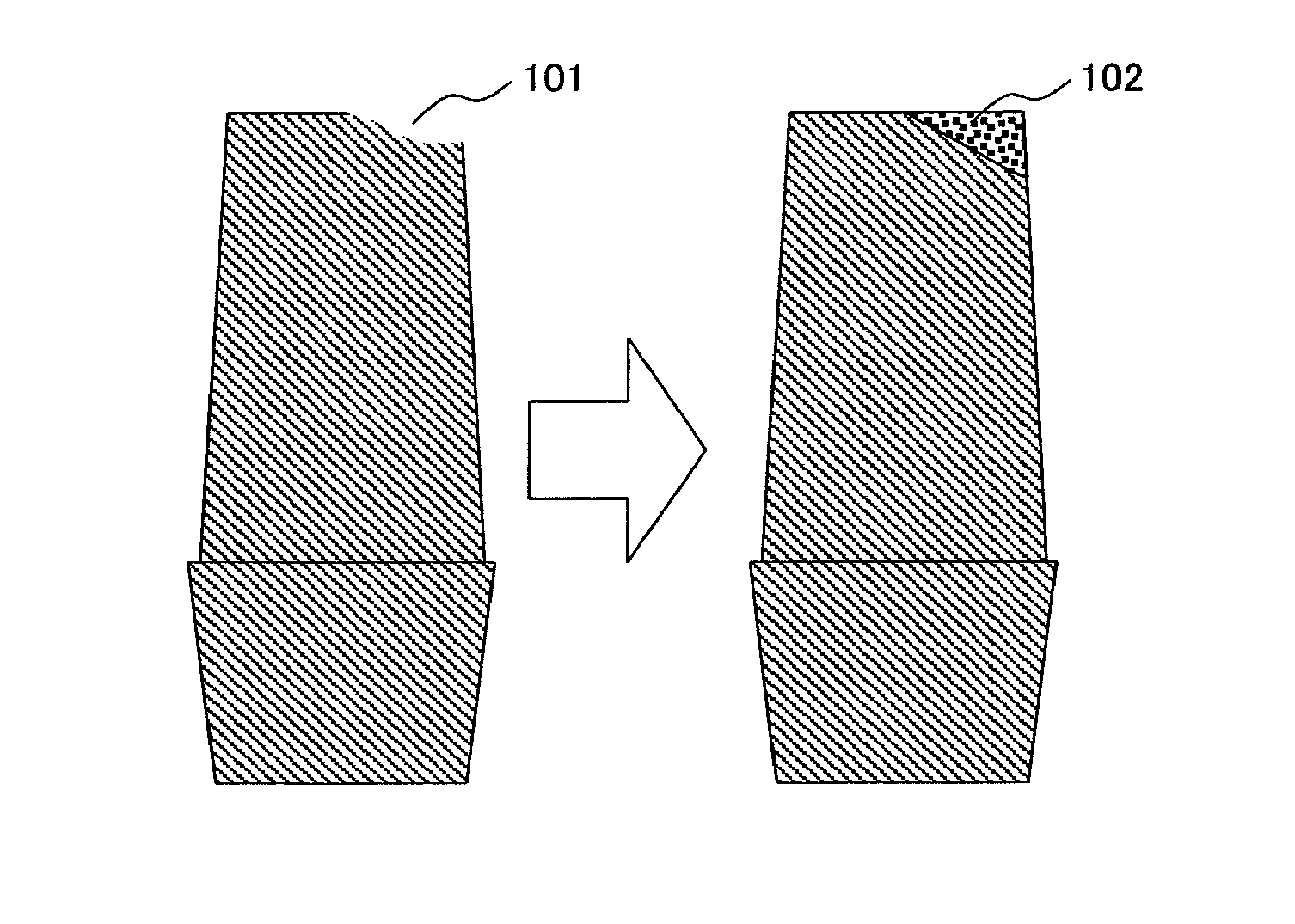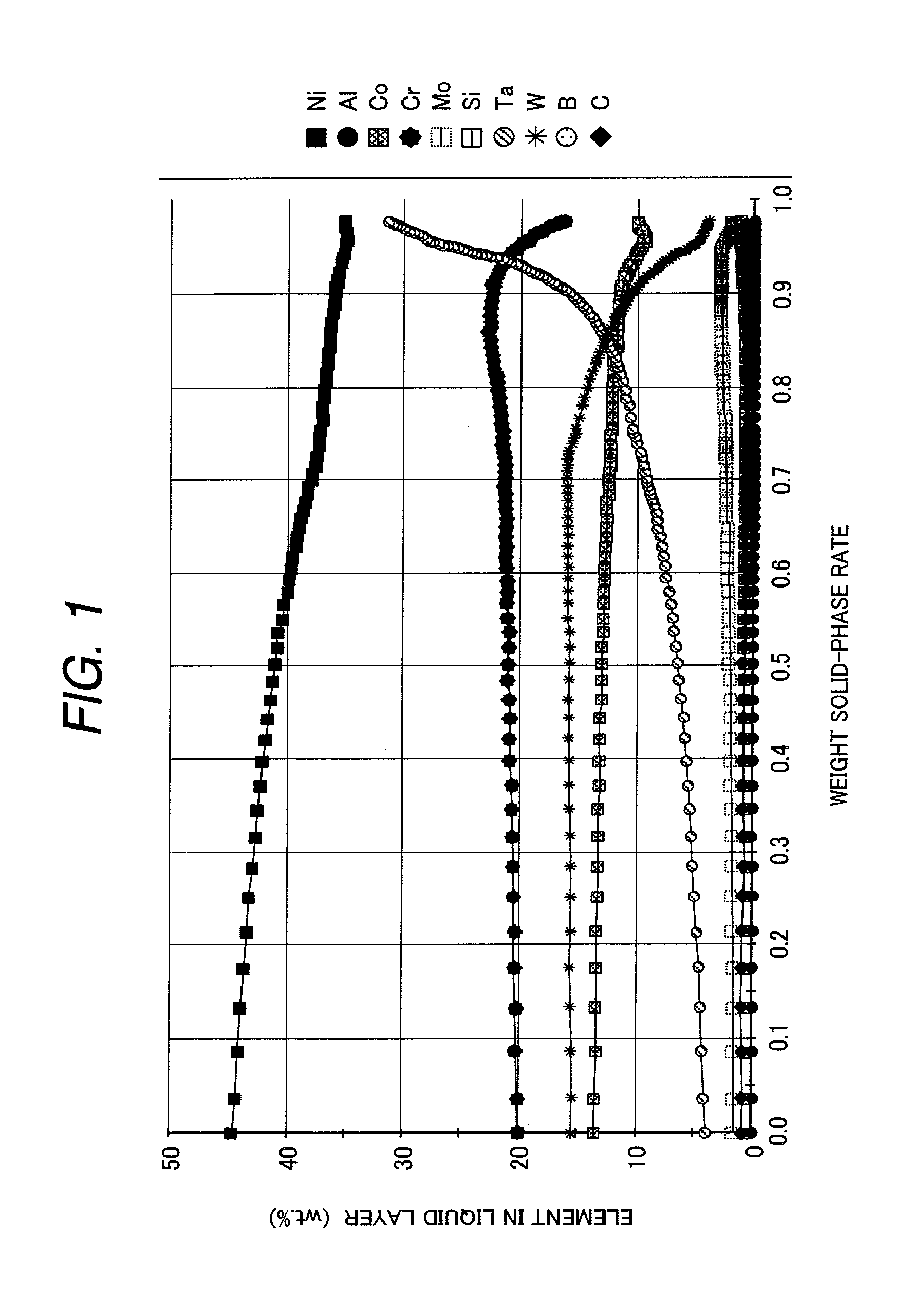Gas Turbine Blade and Manufacturing Method Thereof
a technology of gas turbine blades and manufacturing methods, which is applied in the direction of engines, machines/engines, mechanical apparatus, etc., can solve the problems of oxidation resistance deterioration, not only the difference between the gas component and the alloy component, but also the strength of the weld material to obtain the strength equal to that of the blade material, etc., and achieves a high melting point, high proportion, and high melting point
- Summary
- Abstract
- Description
- Claims
- Application Information
AI Technical Summary
Benefits of technology
Problems solved by technology
Method used
Image
Examples
embodiment 1
[0048]An alloy having the chemical composition as shown in table 1 was manufactured by using a vacuum melting technique and processed to a wire of about 2 mm by hot forging and cold drawing. Using this, the weld metal is formed over the blade base material by a TIG welding method and a test piece is taken to perform various evaluations.
[0049]Table 2 shows the weld material (welding wire) which is used, the weld repair process, welding atmosphere, the oxygen content, and morphology of the obtained weld metal.
TABLE 1Chemical analysis of the test sampleMajor elementComparative materialInvention material(wt. %)12345123Al3.51.20.30.61.20.60.40.5Co2221214141213Mn0.70.70.70.70.70.70.60.7Si0.20.20.20.20.20.20.20.2Cr2020202020201921Mo0001.801.51.51.8Ta00044.554.95.2W1822201518181515C0.090.090.040.040.090.090.060.07
TABLE 2Weld repair process and morphologyWeldWeldrepairWeldingOxygenMor-materialprocessatmospherecontentphologyComparativeComparativeFIG. 3(a)Inert gas12 ppmFIG. 4(c)example Amater...
PUM
| Property | Measurement | Unit |
|---|---|---|
| temperature | aaaaa | aaaaa |
| temperature | aaaaa | aaaaa |
| temperature | aaaaa | aaaaa |
Abstract
Description
Claims
Application Information
 Login to View More
Login to View More - R&D
- Intellectual Property
- Life Sciences
- Materials
- Tech Scout
- Unparalleled Data Quality
- Higher Quality Content
- 60% Fewer Hallucinations
Browse by: Latest US Patents, China's latest patents, Technical Efficacy Thesaurus, Application Domain, Technology Topic, Popular Technical Reports.
© 2025 PatSnap. All rights reserved.Legal|Privacy policy|Modern Slavery Act Transparency Statement|Sitemap|About US| Contact US: help@patsnap.com



